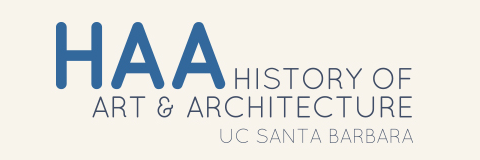The Association for Latin American Art (ALAA) has announced that Assistant Professor Allison Caplan has won the 2021 biennial ALAA Dissertation Award for the best dissertation in the field of Latin American art history. Her dissertation, "Their Flickering Creations: Value, Appearance, Animacy, and Surface in Nahua Precious Art" (2019), uses Nahuatl-language sources to reconstruct Indigenous Nahua aesthetics and art theory for precious artworks that combined valued feathers, stones, and metals. The project was supervised by Professor Elizabeth Boone, Martha and Donald Robertson Chair in Latin American Art at Tulane University. Caplan’s was chosen from the dissertations deposited from 2018 to 2020 on any aspect of the art and visual culture of Latin America, written in English, Spanish, or Portuguese. The award is generously funded by Susan Verdi Webster, Jane Williams Mahoney Professor of Art History and American Studies, Emerita, College of William and Mary.
The award committee, comprised of Lynda Klich (Hunter College), Patricia Sarro (Youngstown State University), and Patrick Hajovsky (Southwestern University), said of Caplan’s dissertation:
“She provides careful material and contextual analyses of Aztec and early colonial objects, images that depict them, and texts that discuss them, employing multidisciplinary angles, including linguistics, anthropology, literary studies, and philosophy. In so doing, she offers original insights into Mexica technical processes of making, the aesthetic effects of objects, and the values ascribed to them by their makers, users, and audiences. With an impressive fluency in Nahuatl that brought careful revisionist readings of manuscripts, Caplan illuminates Mexica concepts of preciousness, notably value, animacy, and surface. She thus brings language into the discussion of Aztec art in original ways that offer radical new interpretations of meaning, and she establishes the common aesthetic denominators that made objects ‘precious.’ And along the way, she demonstrates the incommensurability of the Western categories that have been used to describe these objects, and does nothing less than present an Aztec theory of color.”
The Department of History of Art & Architecture joins in many congratulations to Allison on this groundbreaking work!
